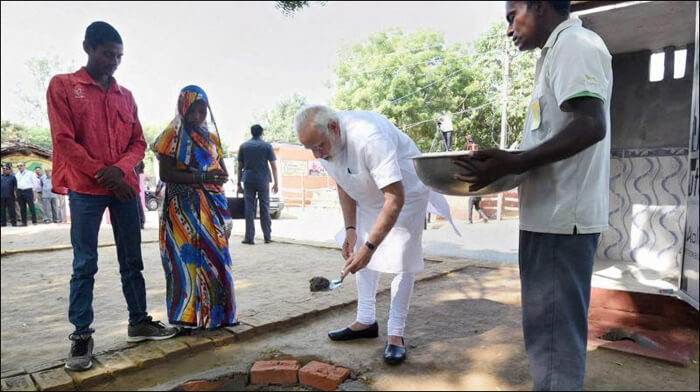ODF full form and meaning
The full form of ODF is “open defecation free” and meaning is “stopping the human practice of defecating outdoors” can be called a scheme in common parlance, by which the state must free itself from open defecation. Open defecation is the human practice of defecating outdoors without a toilet. People prefer fields, bushes, forests, ditches, roads, canals and other open spaces for defecation.
In some places, even people with toilets in their homes prefer to be outdoors, visible faeces can be found in the environment which can have harmful effects to human beings causing various infections. In order to implement ODF sustainability, village households as well as public and municipal institutions use safe technological possibilities for the disposal of faeces.
ODF full form and meaning is that toilets contain feces without contaminating surface soil, groundwater and surface water, fly and animal do not come into contact with open feces and no one has to deal with excrement or smell visible feces from the environment.
On 2nd October 201, Prime Minister Narendra Modi launched “Swacch Bharat Abhiyan” – a nationwide cleanliness campaign and introduced the ODF full form and meaning. The mission is to clean India in order to achieve swatchta all around the country. One of the key aspects of this mission was to eliminate practice of open defecation and which states the meaning and full form of ODF is open defecation free. As Rural and Urban areas are different the guidelines have specifically provided procedure or each area.
The Ministry of Drinking Water and Sanitation of India and its ODF Sustainability Guidelines
The guidelines for achieving ODF were given by the ministry in December 2016 which precisely state hat
Process if ODF achievement: The village wanting to declare itself ODF should resolve all the issues regarding defecation and shall intimate the government about the declaration. This self-declaration will be by Nigrani Samiti of village and after rigorous vigilance and verification by authorities and inspection process which takes about nine months, the village is declared ODF.
Also Read : Clean toilets cease to be luxury under Swachh Bharat Abhiyan
As soon as a case of open defecation is detected, the district judge (DM) or head of the district sanitation committee (DSC) declares the village an ODF and indicates it on the SBM dashboard. After a review, the team at the commissioner level of the SBM Directorate at the state level declares a village an ODF. The team is studying the DM’s proposal, which receives physical confirmation that the village is performing open defecation to see if it can be verify and approve ODF status. Cross reviews the ODF status of the Ministry of Drinking Water and Sanitation, the State Directorate for SBM and SBM conduct random surveys of villages by third parties.
The step by step procedure to these guidelines can be accessible in the official website.
Status of ODF sustainability implementation
In 2018 the Ministry released the status of the mission which included objectives, planning, various programs, evaluation and reporting. The report also mentions the finance sources for the ODF sustainability which are:
– MDWS Funds and State government
– MPLAD/MLALAD Funds
– Funds from 14th finance commission
– Development partners resources
– Bank credit facilities
– Revolving loan
Also Read: BCR Full Form with Explanation and Definition
ODF Sustainability Pushtika Key aspects
1. Toilet usage, solid and liquid waste management and general cleanliness.
2. Possible hurdles in the mission and field functionaries to combat the hurdles.
3. Focus areas to implement field sustainability.
4. Making improvements in the existing household toilets to increase their utility:
-Build two leach pits instead of one, along with a junction chamber to connect the toilet to these pits.
– In toilets with twin pits, vent pipes are not necessary.
– In toilets with no junction chamber, build one.
– Connect the drain of the septic tank to the leach pit.
The entire plan and techniques can be followed here
Statistics and reality of the ODF Sustainability plan
According to the survey by the ministry, here’s what numbers say – 6,03,006 villages have declared ODF and 6,01,780 have been verified. Among these numbers 2,62,771 are ODF gram panchayat’s, 6,972 are ODF Block, 711 ODF Districts and 35 ODF States and Union Territories. Since 2nd October 2014 number of Toilets built across the country are 10,82,35,426. First position of ODF-S was secured by Sikkim followed by Himachal Pradesh and Kerala being third.
Also Read : So is Modi’s Swachh Bharat Abhiyan working?
